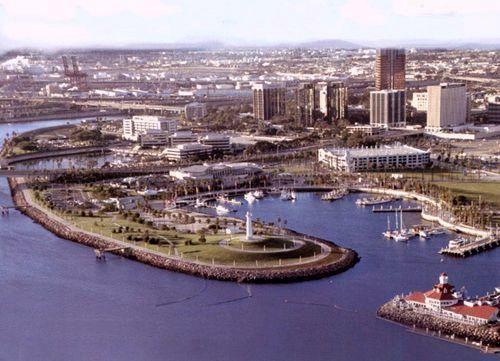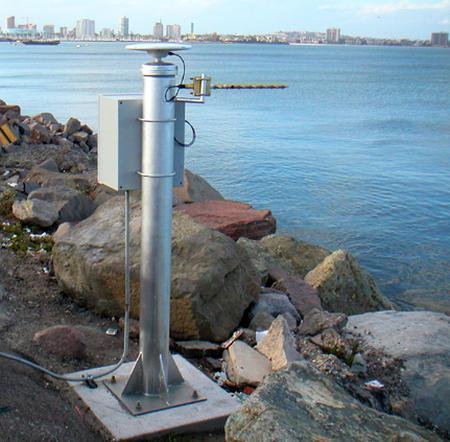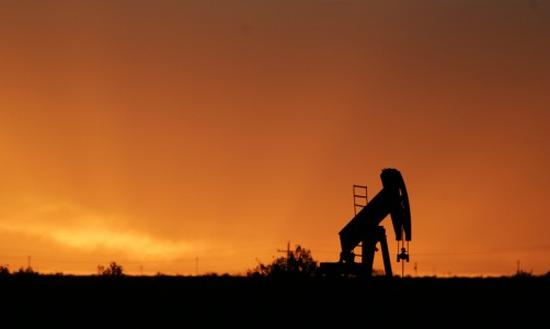 | « Back to article | Print this article |
How Long Beach stopped sinking, continues oil drilling
Few places on earth bear the scars of oil production like Long Beach, California.
Parts of the city have sunk by as much as 29 feet from their original level because of subsidence caused by extraction of billions of barrels of oil from the giant Wilmington field lying directly beneath the city's streets and the adjoining harbour.
The fracking revolution has sparked a fierce debate about the impact of drilling for oil and gas, in both built up areas and pristine wilderness.
Opponents of fracking often portray it as a uniquely dirty and dangerous form of oil and gas production.
But the experience of Long Beach shows the issues fracking raises are not new. Communities have been facing them for over 70 years.
Long Beach illustrates the choices and compromises that have always been associated with oil and gas production.
Uncontrolled development can cause immense damage to property and the environment, but appropriate regulation can enable the oil and gas industry to co-exist harmoniously with local communities.
Click NEXT to read more...
Complete coverage: Union Budget 2013-14
Budget Impact Live!
How Long Beach stopped sinking, continues oil drilling
Sinking City
The Wilmington oil field is estimated to have contained up to 7 billion barrels of original oil in place, much of it heavy tarry crude, rather than the light sweet oils being produced from North Dakota's Bakken and Texas' Eagle Ford shale formations.
Minor subsidence was first noticed in the area in 1928 as a result of groundwater extraction.
But more appreciable movement was noticed in 1936, six years after the Wilmington field was discovered and put into production in 1932. By 1951 and 1952, the surface was falling at a maximum rate of 2 feet per year.
The results were catastrophic. "The ocean inundated wharves, rail lines and pipelines were warped or sheared, while buildings and streets were cracked and displaced," according to the City of Long Beach Department of Oil Properties (DOP), which regulates production in the city and offshore.
Subsidence even triggered small seismic tremors.
The full story is told in an official history "A Subsidence Story" published by DOP and available on its website.
The problem was that uncontrolled extraction of oil, gas and associated water lowered pressure in the hydrocarbon reservoir significantly.
Click NEXT to read more...
Complete coverage: Union Budget 2013-14
Budget Impact Live!
How Long Beach stopped sinking, continues oil drilling
Falling pressure provided less support to the unconsolidated reservoir sands, which compacted owing to the weight of the overlying material, and in turn allowed the surface to sink.
The consequence was a massive "subsidence bowl" directly over the field covering more than 20 square miles and up to 29 feet deep.
The full extent of the damage is illustrated by the black and white photographs on DOP's website - including the famous picture of a dog looking up at a fire hydrant standing six feet in the air because the land around it slipped.
Development of an eastern extension to the field off the coast was banned in the 1950s amid concern about subsidence.
Eventually, engineers determined further subsidence could be halted by injecting water equal to 105 percent of the volume of oil, gas and water extracted from the reservoir.
Waterflooding had the additional benefit of enabling more oil to be recovered by driving some of the crude left behind by primary production towards the wells.
Click NEXT to read more...
Complete coverage: Union Budget 2013-14
Budget Impact Live!
How Long Beach stopped sinking, continues oil drilling
Injection began around 1960 and the land surface was stabilised by 1967. The drilling ban in the East Wilmington Oil Field (also known as the Long Beach Unit) was lifted in the early 1960s following a local ballot.
Four 10-acre artificial drilling islands were built to host the wells for the East Wilmington Field, which radiate out horizontally in all directions under the bay.
Grissom, White, Chaffee and Freeman islands were named after astronauts who died in the US space programme, and landscaped "to enhance the beauty of the shoreline" according to DOP.
Exhausted Giant
More than 6,000 wells have been bored into the Wilmington field, and 3 billion barrels of oil have been produced, enough to meet all current US oil requirements for seven months. Oil operations have generated over $450 million in revenues for the City of Long Beach and over $4.25 billion for the State of California, according to DOP.
However, production has fallen sharply as the field runs down and more and more water rather than oil comes from the wells.
Wilmington currently produces just 35,000 barrels of crude per day together with 1.3 million barrels of water, according to the California Department of Conservation's 2011 oil and gas report.
Click NEXT to read more...
Complete coverage: Union Budget 2013-14
Budget Impact Live!
How Long Beach stopped sinking, continues oil drilling
It must all be substituted to maintain reservoir pressure and prevent further subsidence.
Under the 1958 California Subsidence Act, the City of Long Beach was given powers to control subsidence and regulate oil production.
The West Wilmington Field and Long Beach Unit were unitised to make it easier to share the costs of pressure maintenance through a planned water injection programme.
DOP oversees production and subsidence control for both areas. DOP traditionally monitored subsidence by taking spirit level readings at 900 benchmarks around the city, using 2-3 person survey crews, which took 3 months to complete and cost around $600,000 per year.
Since 2002, the department has instead relied on 11 fixed GPS stations and a semi-annual mobile GPS survey at 240 benchmark locations, which relies on four individual surveyors and can be completed in 5 weeks, at half the cost.
Subsidence remains a constant threat above the oil producing area and managing the risk is the top priority for DOP. Water injection will need to continue for many years after the oil fields are finally depleted to prevent damage to homes and property.
Lessons Learned
Once known as the "Sinking City," Long Beach provides a stark warning of the damage oil and gas production can inadvertently do to local communities and the environment.
Click NEXT to read more...
Complete coverage: Union Budget 2013-14
Budget Impact Live!
How Long Beach stopped sinking, continues oil drilling
But it is also an illustration of how communities can offset the danger through intelligent regulation.
In the 1960s, local residents voted to allow development of the eastern part of the field with appropriate safeguards from the outset (including unitisation before drilling and stringent requirements for injection and pressure maintenance).
Long Beach has already had to come up with innovative solutions to many of the challenges now faced by fracking operations - including limited availability of locations for new wells, the need to drill hundreds of horizontal wells from a small number of pads/islands, and managing water constraints on the islands.
Long Beach is proof it is possible to produce enormous volumes of oil and gas even in densely inhabited locations.
The City of Fort Worth, in Texas, site of the original fracking revolution in the Barnett shale, is another example.
In both cases, Long Beach and Fort Worth inhabitants decided the benefits of oil and gas production were worth it even though they knew it would bring inevitable disruption and some risk, which could be reduced and mitigated but not eliminated altogether by regulation.
Click NEXT to read more...
Complete coverage: Union Budget 2013-14
Budget Impact Live!
How Long Beach stopped sinking, continues oil drilling
Both cases show technical problems associated with oil and gas production matter less than the attitudes of politicians and the public. Technical problems are susceptible to engineering solutions. Attitudes are harder to shift.
Wilmington has produced hundreds of millions of barrels of oil since the late 1940s when it was apparent oil and gas extraction was resulting in widespread subsidence.
But rather than banning the practice, which is what some opponents of hydraulic fracturing would like to do, the local community found a way to continue extracting it while limiting the impact.
Wilmington's oil is a testament to the ingenuity and perseverance of the oil industry, regulators and local communities. Intelligent regulation ensured it could continue to make a small but significant contribution to American prosperity for several more decades.
Long Beach has lessons for industry, politicians, lobbyists and concerned citizens. The question is whether anyone is thoughtful enough to learn from them.
(John Kemp is a Reuters market analyst. The views expressed are his own)
Complete coverage: Union Budget 2013-14
Budget Impact Live!

© Copyright 2024 Reuters Limited. All rights reserved. Republication or redistribution of Reuters content, including by framing or similar means, is expressly prohibited without the prior written consent of Reuters. Reuters shall not be liable for any errors or delays in the content, or for any actions taken in reliance thereon.






